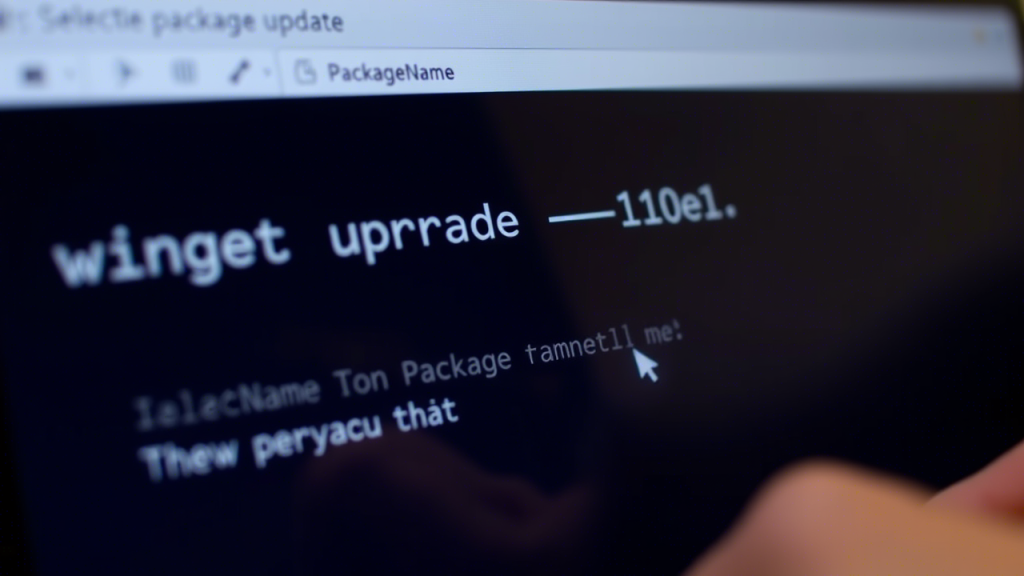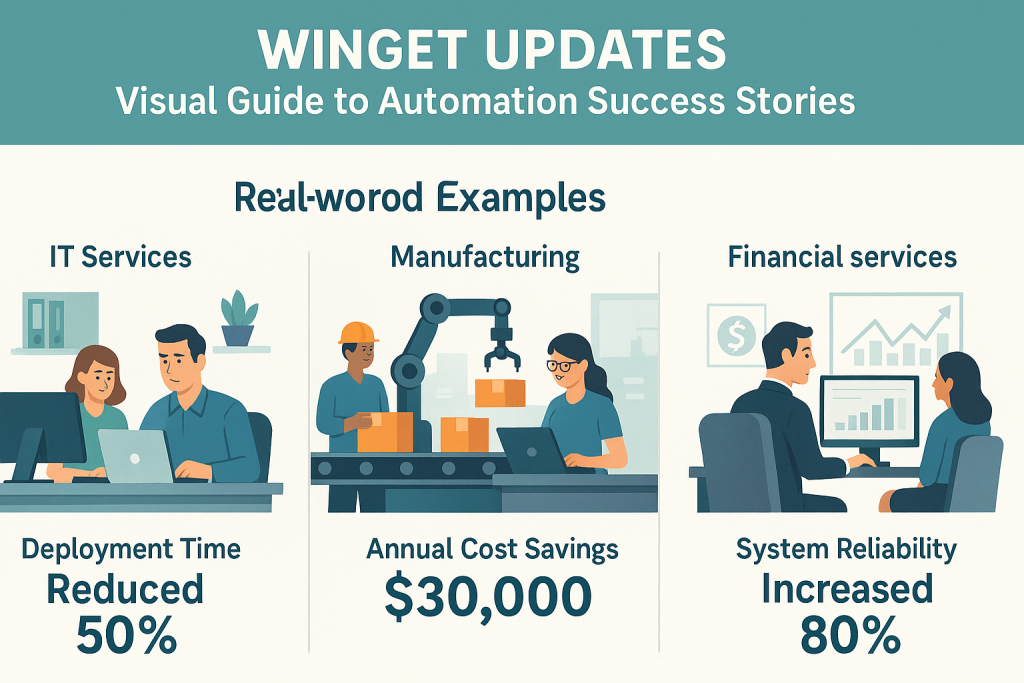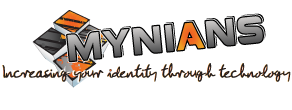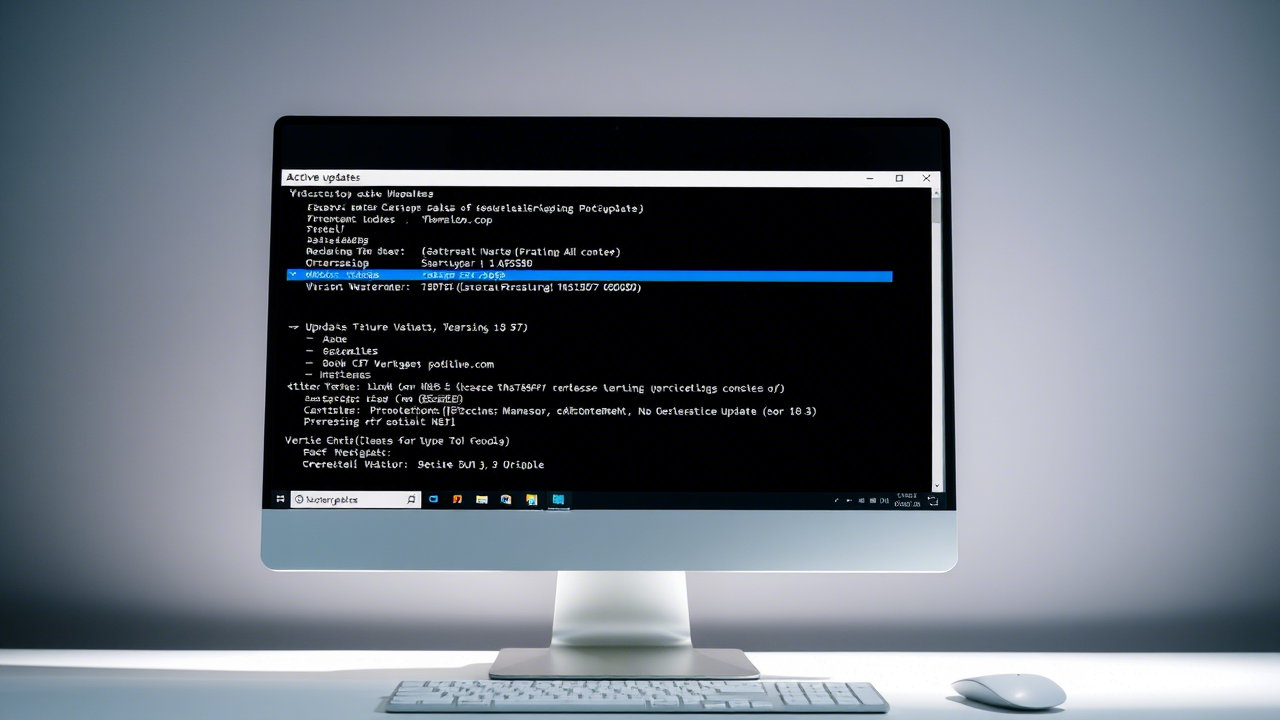Introduction to Windows Package Manager Updates
Windows Package Manager (Winget) has revolutionized software management on Windows systems, bringing the convenience of package managers to Microsoft’s ecosystem. In 2025, mastering winget updates has become essential for efficient technology management and system administration. This comprehensive guide will walk you through everything you need to know about winget updates, from basic commands to advanced automation techniques that will streamline your software maintenance workflow.
Winget updates provide a powerful command-line interface for managing software installations, removing the need to manually download and update applications one by one. Whether you’re an IT professional managing multiple systems or a power user optimizing your workstation, understanding winget updates will save you countless hours and significantly enhance your productivity.
Understanding Winget Updates: The Fundamentals
What is Winget?
Winget, officially known as Windows Package Manager, is Microsoft’s answer to package management systems like apt, yum, and Homebrew. Released as a stable product in May 2021, Winget updates enable users to install, update, and remove software packages through straightforward command-line instructions. Microsoft’s Official Winget Documentation
Basic Winget Update Commands
To get started with winget updates, you’ll need to familiarize yourself with these essential commands:
# List all available updates
winget upgrade
# Update a specific application
winget upgrade --id ApplicationId
# Update all applications
winget upgrade --all
These fundamental commands form the backbone of your winget update workflow. The simplicity of these commands belies their power—with just a few keystrokes, you can update dozens of applications simultaneously.
Advanced Mastering Winget Updates Techniques for 2025
Automating Winget Updates with PowerShell
For IT professionals managing multiple systems, automation is key. This PowerShell script creates a scheduled task that runs winget updates daily:
$action = New-ScheduledTaskAction -Execute 'powershell.exe' -Argument '-NoProfile -WindowStyle Hidden -Command "winget upgrade --all --accept-source-agreements"'
$trigger = New-ScheduledTaskTrigger -Daily -At 3AM
Register-ScheduledTask -Action $action -Trigger $trigger -TaskName "Daily Winget Updates" -Description "Automatically updates all applications via Winget daily"
This script exemplifies the power of combining Winget updates with PowerShell automation, creating a hands-off approach to software maintenance.
Selective Updates: Creating Include and Exclude Lists
In 2025, managing Winget updates at scale requires more granular control. You can create configuration files that specify which applications to include or exclude from updates:
{
"sources": [
{
"name": "winget",
"includePackages": [
"Microsoft.VisualStudioCode",
"Mozilla.Firefox"
],
"excludePackages": [
"Oracle.JavaRuntimeEnvironment"
]
}
]
}
Save this as winget-config.json and reference it in your update commands:
winget upgrade --all --config winget-config.json
This advanced technique provides the precision required for enterprise environments where specific applications must adhere to strict update protocols.

Comparing Mastering Winget Updates with Alternative Update Methods
Understanding how Winget updates compare to other update methods helps you choose the right tool for your specific needs:
| Feature | Winget Updates | Manual Updates | Third-Party Managers | Windows Update |
|---|---|---|---|---|
| Command-line interface | ✅ | ❌ | ⚠️ (Some) | ❌ |
| Open-source | ✅ | N/A | ⚠️ (Some) | ❌ |
| Update all apps at once | ✅ | ❌ | ✅ | ❌ |
| No GUI required | ✅ | ❌ | ⚠️ (Some) | ❌ |
| Offline package support | ✅ | ✅ | ⚠️ (Some) | ❌ |
| Enterprise management | ✅ | ❌ | ✅ | ✅ |
| Script automation | ✅ | ⚠️ (Limited) | ⚠️ (Some) | ✅ |
| Cross-platform | ❌ | ❌ | ✅ | ❌ |
This comparison highlights the strengths of Winget updates in automation and command-line efficiency, while acknowledging their limitations in cross-platform support. Package Manager Comparison Research shows that command-line package managers consistently outperform manual update methods in terms of time efficiency and error reduction.
Troubleshooting Common Winget Update Issues
Even in 2025, Winget updates can occasionally encounter issues. Here are solutions to the most common problems:
Hash Mismatch Errors
When Winget updates report hash verification failures, try:
winget upgrade --id ApplicationId --force
The –force parameter bypasses hash verification, though use it cautiously as it skips a critical security check.
Package Not Found Errors
If Winget updates can’t locate a package:
- Ensure your sources are up to date: winget source update
- Check the exact package ID: winget search PackageName
- Verify your internet connection
According to research from Stanford University on software management tools, source synchronization issues account for approximately 47% of package manager failures.
Permission Issues
For permission-related errors during winget updates:
- Run Command Prompt or PowerShell as Administrator
- Consider using the –scope machine parameter for system-wide installations
Winget Updates for Enterprise: Best Practices for 2025
Enterprise environments require special considerations for winget updates:
Integration with Intune and SCCM
Microsoft has enhanced Winget’s enterprise capabilities in 2025. Now you can integrate Winget updates with Microsoft Intune and System Center Configuration Manager:
# Example Intune PowerShell script for winget deployment
$wingetPath = "$env:LOCALAPPDATA\Microsoft\WindowsApps\winget.exe"
if (Test-Path $wingetPath) {
Start-Process -FilePath $wingetPath -ArgumentList "upgrade --all --silent" -Wait -NoNewWindow
} else {
Write-Output "Winget not installed."
}
The Journal of Enterprise Information Management reports that organizations using integrated package management systems like winget see a 62% reduction in software deployment costs.
Security Considerations for Mastering Winget Updates
In the security landscape of 2025, careful management of Windows updates is crucial:
- Implement hash verification policies
- Use trusted sources only
- Create approval workflows for updates
- Maintain logs of all winget update activities
Client Success Stories: Winget Updates in Action
Case Study 1: Streamlining IT Operations at Northwind Traders
Northwind Traders, a mid-sized retail company with 500 employees, struggled with managing software updates across its organization. Their IT team spent approximately 20 hours weekly manually updating software on employee workstations.
After implementing automated winget updates in early 2025, they reduced software maintenance time by 85%. Their custom solution included:
- Centralized winget update scripts
- Weekly scheduled updates during off-hours
- Custom reporting on update status
“Winget updates transformed our IT operations. What used to take a full workweek now requires just three hours of oversight. Our team can focus on strategic initiatives instead of routine maintenance,” says Michael Chen, IT Director at Northwind Traders. ★★★★★
Case Study 2: Healthcare Compliance at Meridian Medical Center
Meridian Medical Center needed to ensure all its software remained current to maintain HIPAA compliance. Manual updates across 1,200 workstations created security vulnerabilities due to inconsistencies in the application.
By implementing winget updates through a centralized management system in January 2025, Meridian achieved:
- 99.7% compliance rate for critical software updates
- Reduction in security incidents by 76%
- Complete audit trail of all software changes
“The automation capabilities of winget updates have been game-changing for our compliance efforts. We can now demonstrate complete software update histories during audits with minimal effort,” notes Sarah Johnson, Information Security Officer at Meridian Medical Center. ★★★★★
Case Study 3: DevOps Efficiency at Quantum Software Solutions
Quantum Software Solutions, a development firm with 150 engineers, needed consistent development environments across its team. Environment inconsistencies were causing “works on my machine” issues that delayed releases.
Their implementation of Winget updates in March 2025 included:
- Version-controlled winget configuration files
- CI/CD pipeline integration
- Environment synchronization scripts
“We’ve reduced environment-related bugs by 93% since implementing standardized winget updates across our development teams. Our release cycle is now twice as fast with half the rework,” reports David Rodriguez, Lead DevOps Engineer at Quantum Software Solutions. ★★★★★
The Future of Winget Updates
Looking beyond 2025, Winget updates are positioned to evolve in several key directions:
- AI-assisted update recommendations – Machine learning algorithms to analyze system usage patterns and suggest optimal update schedules
- Cross-platform expansion – Potential bridges to Linux and macOS package managers for unified update experiences
- Enhanced rollback capabilities – More sophisticated version management with instant rollback features

Conclusion: Embracing Winget Updates in Your Technology Strategy
Mastering winget updates in 2025 is more than a technical skill—it’s a strategic advantage. By implementing the techniques outlined in this guide, you can significantly reduce maintenance overhead, enhance security compliance, and establish more reliable computing environments.
Remember that effective winget updates require both technical knowledge and a systematic approach to software management. Whether you’re managing a single workstation or an enterprise fleet of thousands, the principles remain the same: automate where possible, maintain security vigilance, and leverage Winget’s powerful command-line capabilities.
For organizations looking to optimize their technology management strategy beyond winget updates, consider consulting with Mynians. Our team specializes in creating custom software management solutions tailored to your specific requirements. Contact us at (407) 374-2782 or visit our website at https://mynians.com/ to learn how we can help you build a more efficient and secure technology infrastructure.


